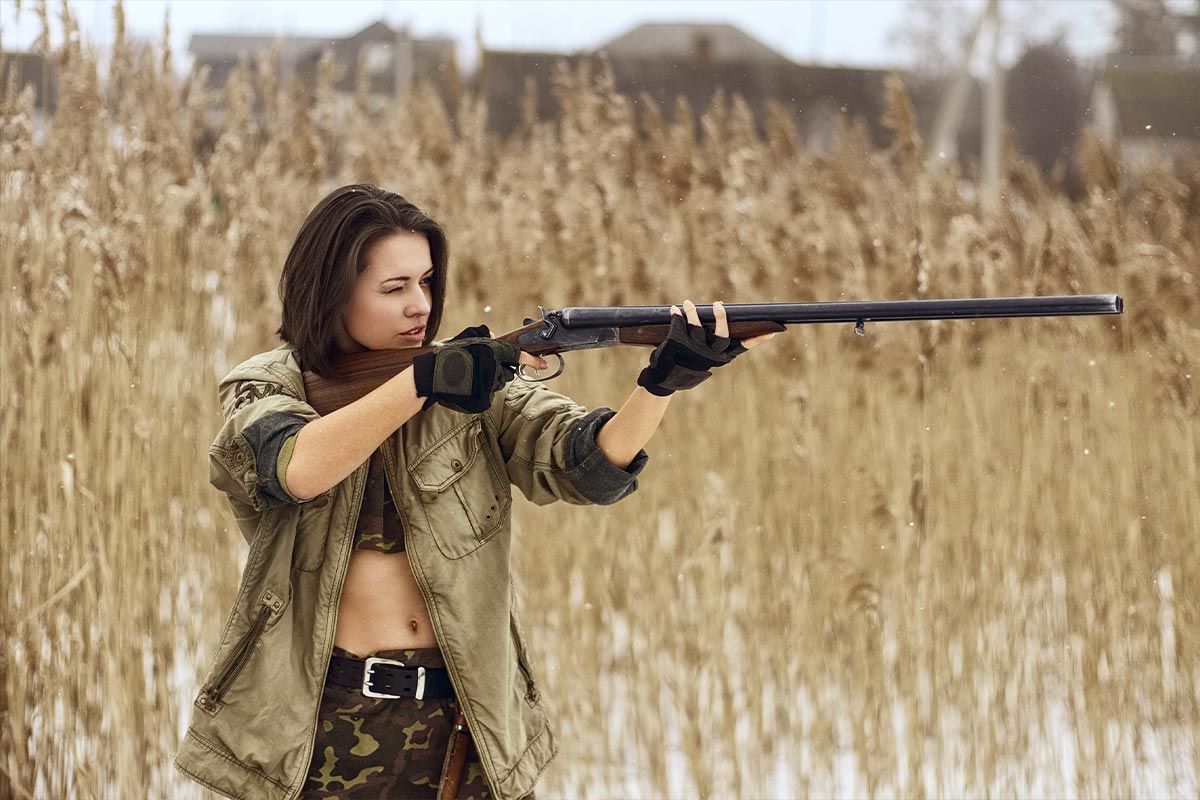The Ultimate Guide to Small Game Hunting: Tips and Tricks for Beginners

Small game hunting refers to hunting small animals such as squirrels, rabbits, and birds. It is a popular pastime that allows one to connect with nature and experience the thrill of the hunt. Hunting small game is not only a fun and rewarding activity, but it also plays an essential role in maintaining a healthy ecosystem. Hunting is considered good for the environment as it helps control animal populations, promote biodiversity and preserve habitats. It's also a way of obtaining food and resources.
However, hunting small game also comes with a set of safety precautions that you should consider. Whether you are a beginner or an experienced hunter, it is vital to be familiar with the laws and regulations of the area you plan to hunt in, as well as the proper use and handling of hunting equipment.
The Ultimate Guide to Small Game Hunting: Tips and Tricks for Beginners are designed to provide you with the knowledge and skills needed to safely and successfully hunt small game. This guide covers everything from selecting the right equipment and gear to finding and tracking small games, setting up and shooting, and preparing and cooking the game you harvest. We will also look at the benefits of hunting for the environment and discuss the ethical considerations of hunting. By the end of this guide, you will have a solid foundation for your small game hunting journey.
Equipment and Gear
Regarding small game hunting, having the right equipment and gear is essential for a successful and safe hunt. There are a variety of firearms and ammunition options available for small game hunting, each with its unique benefits and drawbacks. It's essential to consider the type of small game you plan to hunt, as well as the terrain and conditions of the area when selecting a firearm and ammunition.
In addition to firearms and ammunition, proper clothing and footwear are also crucial for small game hunting. Camouflage clothing and waterproof boots will help to keep you concealed and protected from the elements. You can also use various accessories and tools to enhance your hunting experiences, such as hunting calls, binoculars, and a hunting knife.
You can also use accessories and tools to enhance your hunting experiences, such as hunting calls, binoculars, and a hunting knife—some of the best accessories discussed in this link.
It's important to note that hunting gear and equipment can be costly, so it's a good idea to invest in quality items that will last for many hunting seasons.
Finding and Tracking Small Game
Once our equipment and gear are ready, it's time to start finding and tracking small games. The first step is to identify signs of small game activity, such as tracks, scat, and feeding or nesting areas. Understanding the behavior of the specific small game species you plan to hunt can also help locate them. For example, some small game species are active during the day, while others are active at night.
Hunting dogs can also be a helpful tool for finding and tracking small game. Many small game hunting breeds, such as beagles and spaniels, are trained to track and flush out the small game. They can also help to retrieve the game once it's been shot.
When tracking and locating small game, it's essential to know the laws and regulations of the area you are hunting in. Some areas have restrictions on the use of hunting dogs, and it's critical to be familiar with these rules before heading out on your hunt.
Once you have located the small game, it's essential to take a stalking approach and to be as quiet as possible as you move in for a shot. This is where camouflage and scent control become imperative.
Stalking and Setting Up
When stalking a small game, it's essential to approach the hunting area quietly and cautiously. This means staying low and using natural covers, such as bushes and trees, to conceal yourself. The key is to get as close to the small game as possible without being detected.
Setting up blinds or stands can also be a helpful strategy for stalking small games. Blinds, such as ground blinds or tree stands, can be used to conceal yourself and get closer to the small game. It's crucial to select a location that is likely to be frequented by small game and to set up the blind or stand in the way that allows for a clear shot.
Camouflage and scent control are also crucial when stalking and setting up for a shot. Camouflage clothing and face paint can help to conceal you from the small game, while scent control sprays and cover scents can help to mask your human scent.
It's essential to remember that a small game can be easily scared off, so it's critical to be patient and to move slowly and quietly as you stalk and set up for a shot.
Shooting and Retrieving
When shooting small games, it's essential to have proper aim and shot placement. An adequate objective is crucial for a clean and ethical kill, while shot placement is vital to ensure a quick and humane death. It's also important to consider the type of ammunition you are using and the specific small game species you are hunting, as different types of ammo and animals may require different shot placement.
Retrieving and field-dressing the small game after a successful hunt is also important. Field dressing involves gutting and cleaning the game, and it's essential to be familiar with the proper techniques to do this safely and hygienically.
It's also important to know the laws and regulations regarding retrieval and field dressing, as different areas may have specific rules and guidelines.
Cooking and Preparing Small Game
Once you have successfully hunted and retrieved a small game, cleaning and preparing the game for cooking is essential. Cleaning and skinning the small game involve removing the internal organs, and it's critical to be familiar with the proper techniques to do this safely and hygienically.
Several methods for cooking small game, including grilling, roasting and braising. How you choose will depend on the specific small game species and your preference. Popular recipes and seasoning tips can be found in various hunting and outdoor magazines or websites.
It's also important to remember to properly handle and store the game meat to ensure that it stays fresh and safe to eat. This may include freezing the meat or properly packaging it for storage.
Final Takeaway
Small game hunting is a fun and rewarding activity that allows one to connect with nature and experience the thrill of the hunt. It also plays an essential role in maintaining a healthy ecosystem. Anyone can safely and successfully hunt small game with the right equipment, gear, and knowledge.
This guide has covered everything from selecting the right equipment and gear to finding and tracking small game, setting up and shooting, and preparing and cooking the game you harvest. It also discussed the benefits of hunting for the environment and the ethical considerations of hunting. Always follow the laws and regulations in the area you're hunting, and respect the game and the environment.
As you continue to pursue small game hunting, you may have accumulated a collection of firearms and equipment. And when it comes time to sell or upgrade your gear, it's crucial to have a trusted and reliable buyer. That's where CashforArms comes in. They make it easy to sell your guns for cash, allowing you to invest in new equipment and improve your hunting skills.
We hope this guide has given you the knowledge and skills to embark on your small game hunting journey. Happy hunting!


0 comments